Silvia Lopez de Diego
Deep Architectures for Automated Seizure Detection in Scalp EEGs
Dec 28, 2017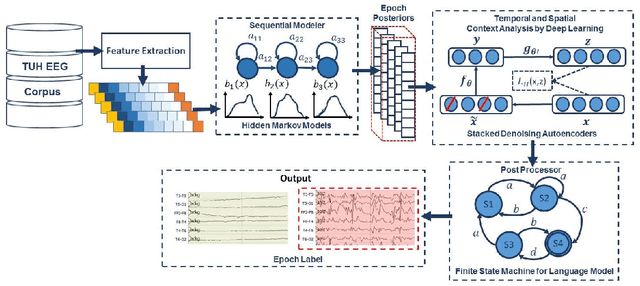
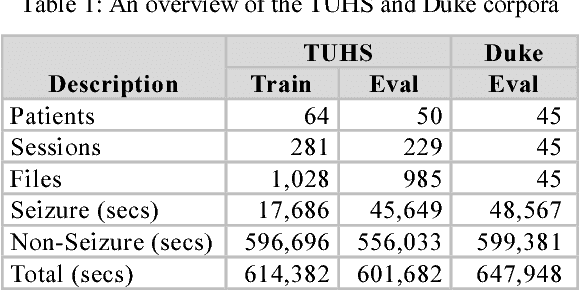

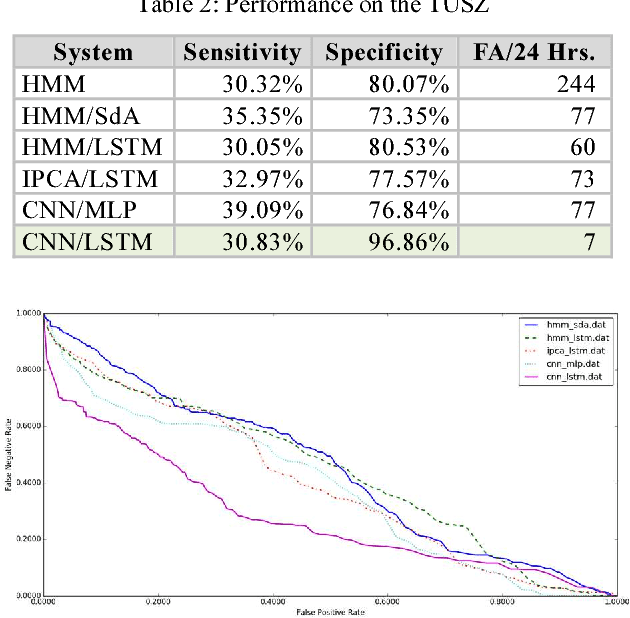
Abstract:Automated seizure detection using clinical electroencephalograms is a challenging machine learning problem because the multichannel signal often has an extremely low signal to noise ratio. Events of interest such as seizures are easily confused with signal artifacts (e.g, eye movements) or benign variants (e.g., slowing). Commercially available systems suffer from unacceptably high false alarm rates. Deep learning algorithms that employ high dimensional models have not previously been effective due to the lack of big data resources. In this paper, we use the TUH EEG Seizure Corpus to evaluate a variety of hybrid deep structures including Convolutional Neural Networks and Long Short-Term Memory Networks. We introduce a novel recurrent convolutional architecture that delivers 30% sensitivity at 7 false alarms per 24 hours. We have also evaluated our system on a held-out evaluation set based on the Duke University Seizure Corpus and demonstrate that performance trends are similar to the TUH EEG Seizure Corpus. This is a significant finding because the Duke corpus was collected with different instrumentation and at different hospitals. Our work shows that deep learning architectures that integrate spatial and temporal contexts are critical to achieving state of the art performance and will enable a new generation of clinically-acceptable technology.
Automatic Analysis of EEGs Using Big Data and Hybrid Deep Learning Architectures
Dec 28, 2017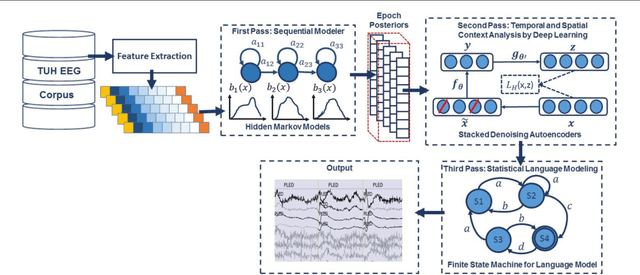
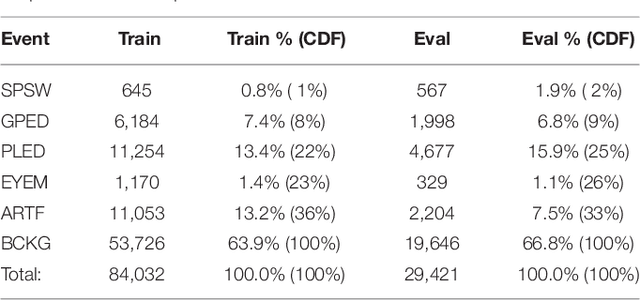
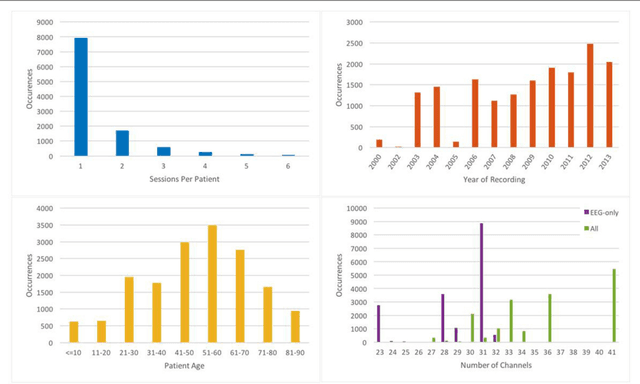

Abstract:Objective: A clinical decision support tool that automatically interprets EEGs can reduce time to diagnosis and enhance real-time applications such as ICU monitoring. Clinicians have indicated that a sensitivity of 95% with a specificity below 5% was the minimum requirement for clinical acceptance. We propose a highperformance classification system based on principles of big data and machine learning. Methods: A hybrid machine learning system that uses hidden Markov models (HMM) for sequential decoding and deep learning networks for postprocessing is proposed. These algorithms were trained and evaluated using the TUH EEG Corpus, which is the world's largest publicly available database of clinical EEG data. Results: Our approach delivers a sensitivity above 90% while maintaining a specificity below 5%. This system detects three events of clinical interest: (1) spike and/or sharp waves, (2) periodic lateralized epileptiform discharges, (3) generalized periodic epileptiform discharges. It also detects three events used to model background noise: (1) artifacts, (2) eye movement (3) background. Conclusions: A hybrid HMM/deep learning system can deliver a low false alarm rate on EEG event detection, making automated analysis a viable option for clinicians. Significance: The TUH EEG Corpus enables application of highly data consumptive machine learning algorithms to EEG analysis. Performance is approaching clinical acceptance for real-time applications.
 Add to Chrome
Add to Chrome Add to Firefox
Add to Firefox Add to Edge
Add to Edge